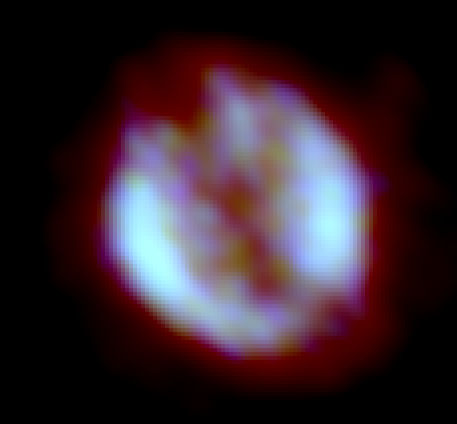Galactic Science
At visible wavelengths, dust obscuration and absorption effects can be significant toward the Galactic plane, but these effects are not problematic at radio wavelengths, and there is a rich history of using radio observations to find objects deep within the Galaxy (see Helfand et al. 2006, and references therein). Further, there has been a host of surveys of the Galaxy at wavelengths that do penetrate deep into the Galaxy, from the infrared to γ-ray (e.g., with Spitzer, Herschel, Chandra, XMM-Newton, and Fermi) that VLASS will complement, allowing for a rich multiwavelength characterization of sources detected. The following three topics will be further illuminated by the Galactic coverage afforded by the VLASS.
Compact Objects: The 2–4 GHz frequency of VLASS makes it especially sensitive to rare pulsar systems that are likely to be at low Galactic latitudes close to the Galactic Plane, and therefore have their emission highly scattered (e.g., PSR-BH binaries). By applying a series of “filters” such as spectral index, polarization and compactness, the large number of sources detected in VLASS can be reduced to a feasible number on which to conduct a periodicity search using single dish telescopes.
Coronal Magnetic Activity on Cool Stars: The radio emission from nearby active stars provides a unique probe of accelerated particles and magnetic fields that occur in them, which is useful for a broader understanding of dynamo processes in stars, as well as the particle environment around those stars. VLASS will be able to detect ultracool dwarfs to 10–20 pc, active dwarf stars to a few tens of parsecs, and active binaries to slightly less than 2 kpc. In the nearest star forming regions (150–300 pc), VLASS sensitivity limits will probe stellar radio luminosities that enable studies of particle acceleration in young stellar objects at a range of evolutionary stages.
Star Formation and Evolution, Distant Thermal Sources, and Galactic Structure: Young, massive stars produce HII regions, while intermediate and low-mass stars end their lives by expelling their outer layers into the ISM, producing planetary nebulae (PNe; e.g. Figure 1). In each case, the hot central star ionizes surrounding material, which then yields free-free radio emission. Radio observations permit identifying these thermal Galactic sources because they are relatively unaffected by dust obscuration. By combining the VLASS with radio observations at other frequencies, and infrared observations, an expanded sample of HII regions and PNe throughout 75% of the Galactic disk would be obtained.

Figure 1: the planetary nebula NGC 7354 imaged in VLASS pilot data.




Connect with NRAO